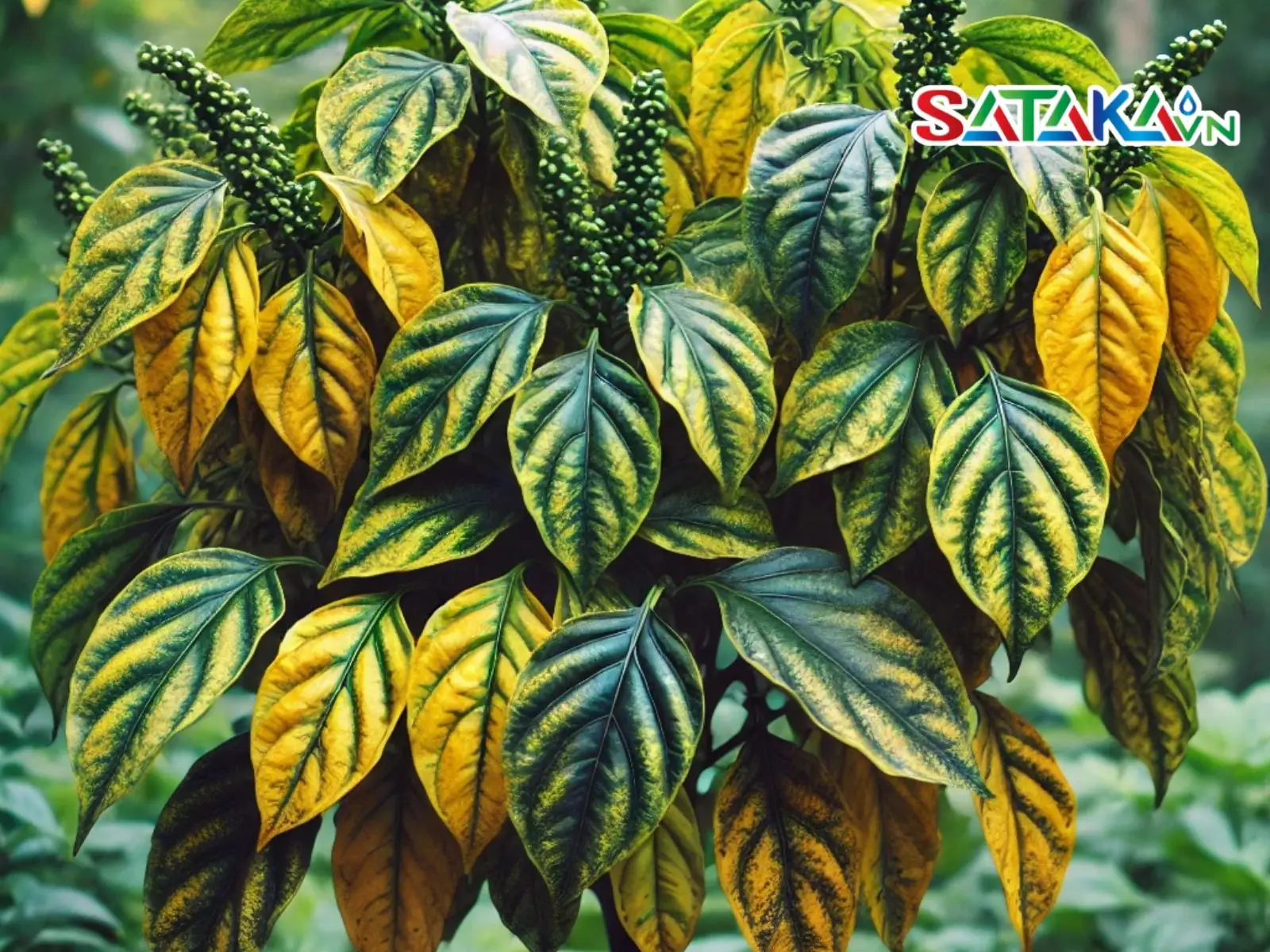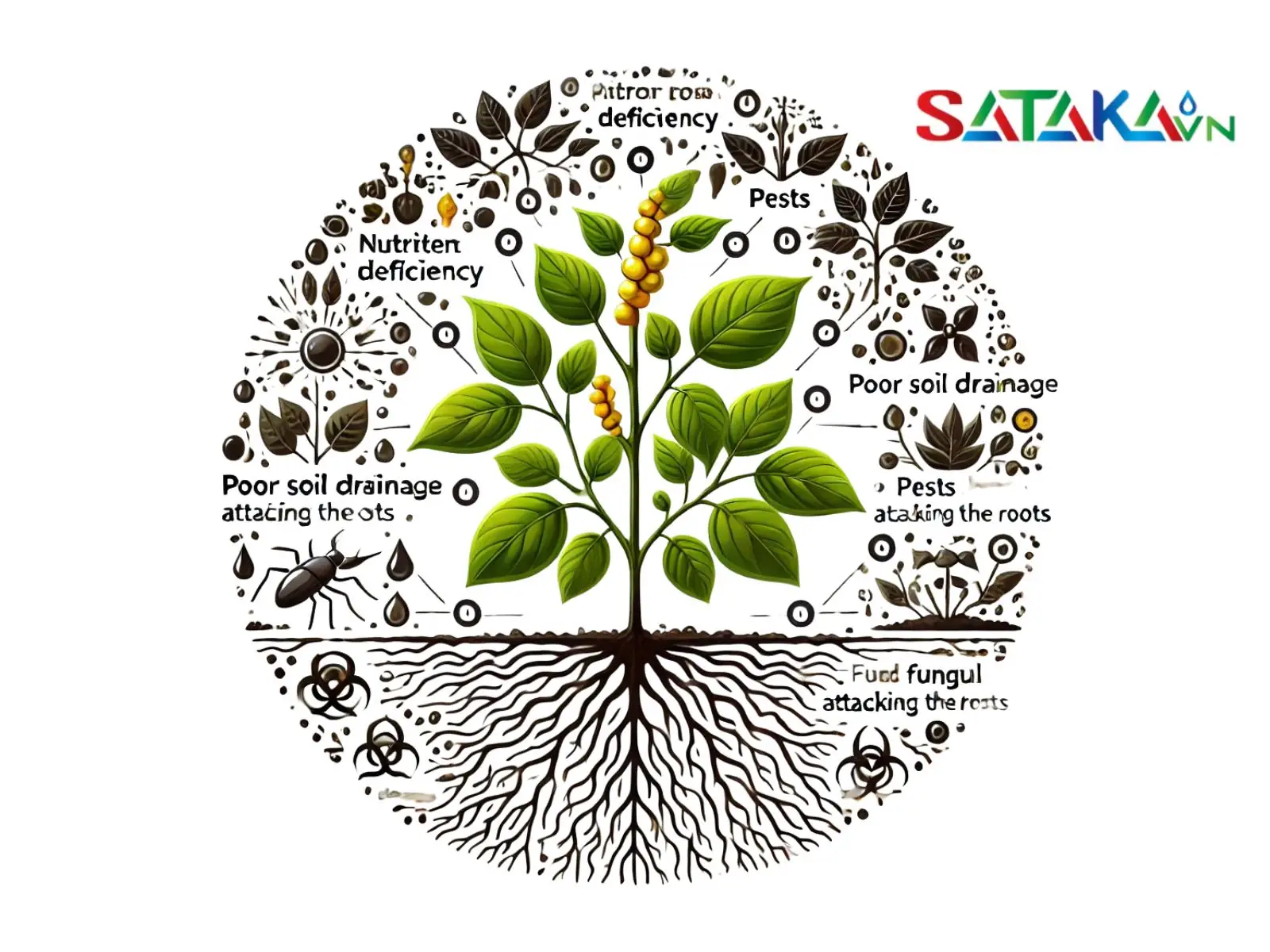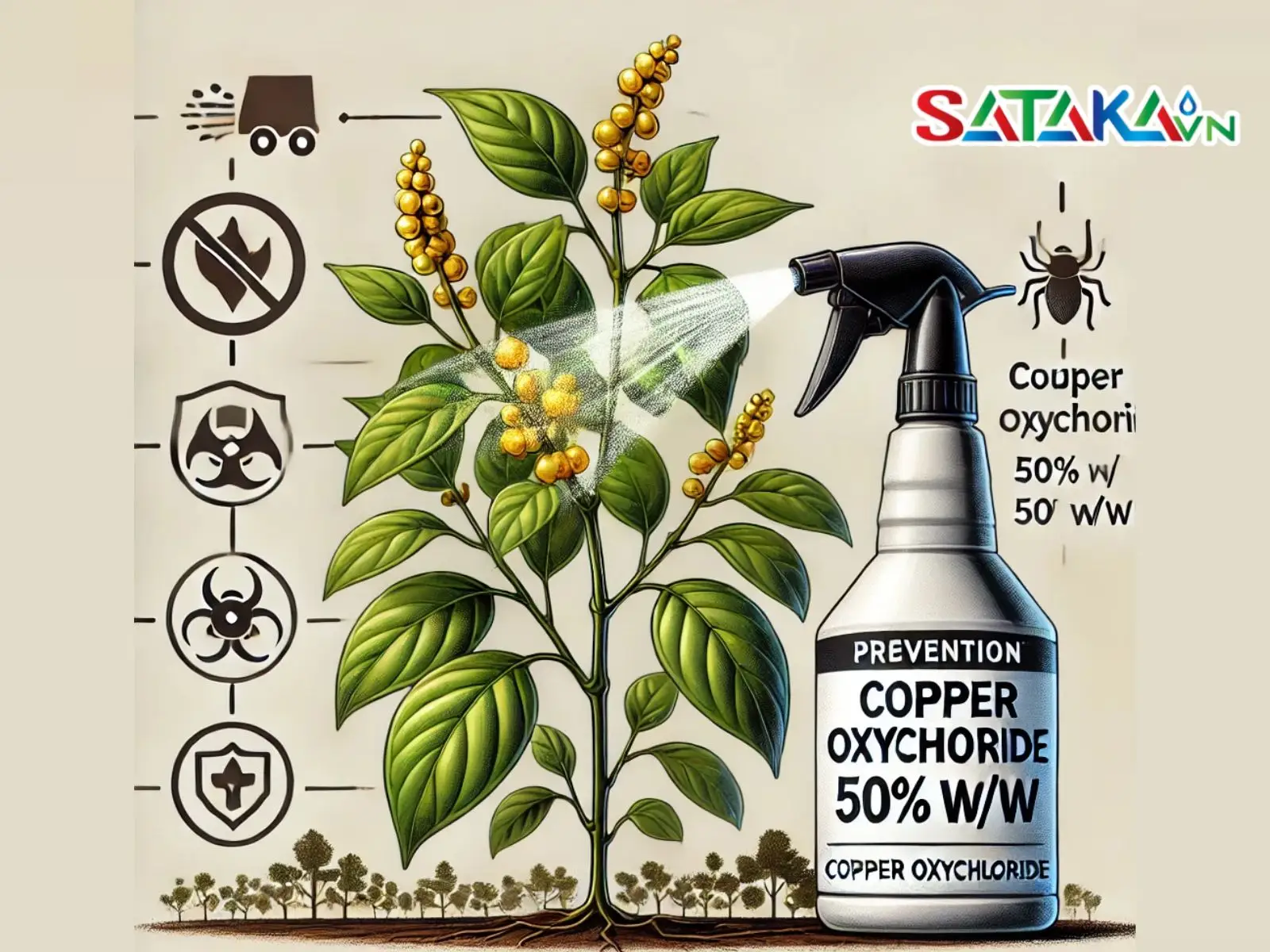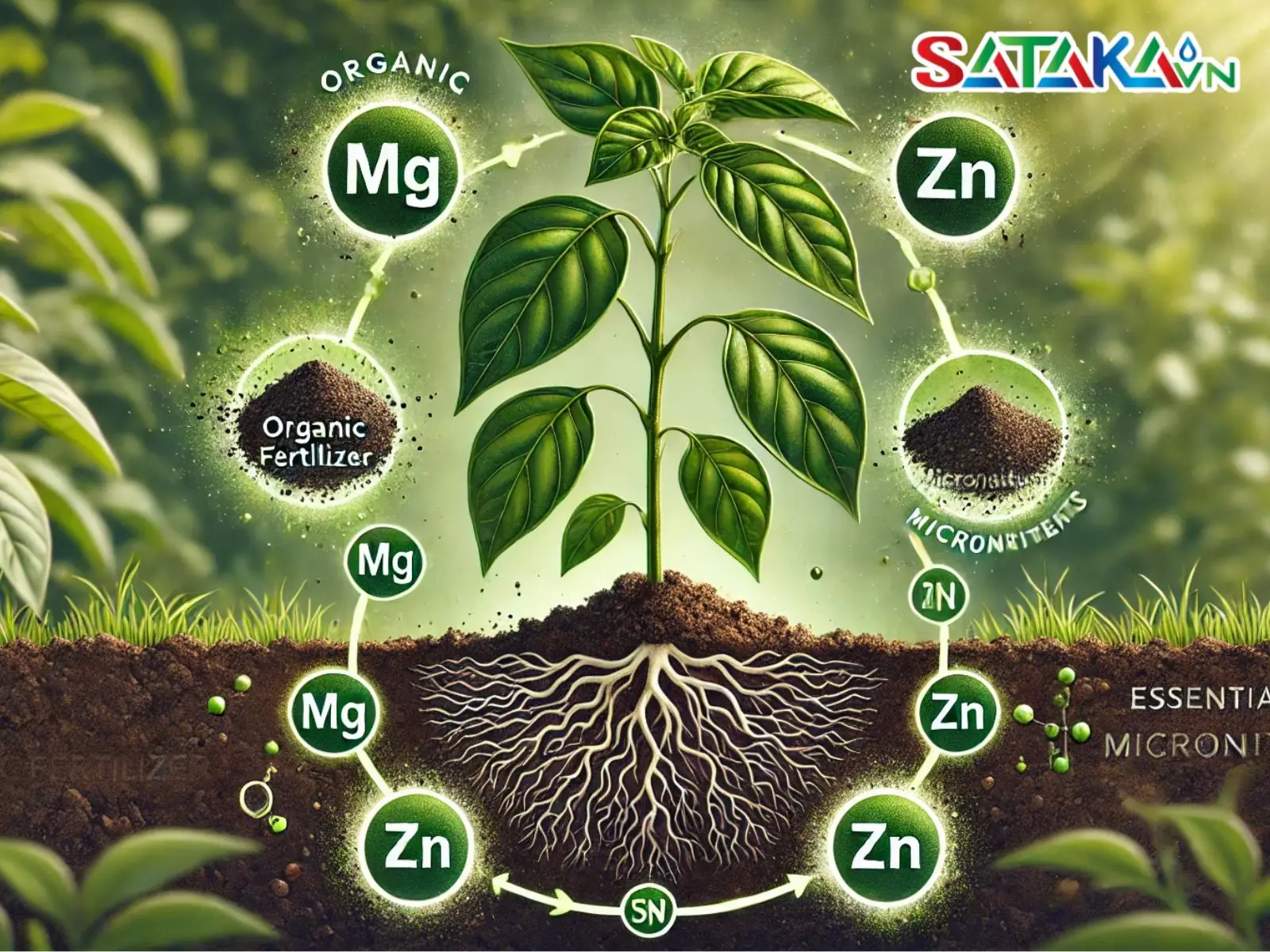Yellow leaves on pepper plants are a warning sign that the plant is lacking nutrients or has disease. Find out the causes and effective remedies to protect the productivity of your pepper garden.
Pepper plants are among the high-value crops, especially in the Central Highlands and Southeast provinces. However, the issue of pepper plants turning yellow has become increasingly common, severely affecting productivity and product quality. The following information from SATAKA will help you understand the causes and effective solutions to address yellowing leaves on pepper plants.
Yellowing leaves in pepper plants occur when the leaves change from vibrant green to pale yellow. This phenomenon may appear on a few leaves or spread throughout the entire plant. It signals that the pepper plant is facing health issues caused by various factors such as diseases, pests, or even harsh weather conditions. The yellowing leaves issue not only affects productivity but can also lead to plant death if not detected and addressed promptly.

Pepper tree's leaves turn yellow
Some typical signs of yellowing leaves in pepper plants include:

Pepper leaves change from green to yellow
Physiological causes often stem from improper care, such as nutrient deficiencies (especially micronutrients), unsuitable soil pH, or stress from sudden changes in living conditions.
For instance, a lack of potassium or magnesium can lead to yellowing leaves in pepper plants. Overwatering or underwatering can also shock the plant, resulting in yellowing leaves.
Some common diseases that cause yellowing leaves in pepper plants include anthracnose, quick wilt, slow wilt, and yellow vein diseases. These diseases are often caused by bacteria, fungi, or viruses, spreading rapidly in humid and poorly ventilated conditions. These diseases weaken the plant and damage its root system, leading to yellowing and wilting of leaves.

Due to weather, diseases, and insects, pepper plants turn their leaves yellow
Pests such as mealybugs, thrips, red spider mites, or stem borers can cause yellowing leaves in pepper plants. These pests often attack the roots, stems, or leaves, disrupting the absorption of nutrients and water, resulting in weakened plants and yellowing leaves.
Adverse weather conditions such as prolonged rainfall, excessively high or low temperatures can also lead to yellowing leaves in pepper plants. In particular, during the rainy season, if the soil remains waterlogged for an extended period, the roots will be damaged, leading to yellowing leaves and root rot.
When noticing the initial signs of yellowing leaves due to pests or diseases, it is essential to quickly select the appropriate plant protection products for each specific issue.
For example, if the issue is caused by fungi, fungicides containing Copper Oxychloride, Mancozeb, Propiconazole, or Carbendazim can help eliminate the fungal disease. However, it is crucial to use the correct dosage to ensure effectiveness and safety for users and the environment.
For areas with imbalanced soil pH, soil improvement is recommended. Adding lime or using organic fertilizers can enhance soil fertility and balance nutrients, enabling pepper plants to grow better. Ensure proper drainage and adjust soil pH to the ideal range of 5.5 to 6.5.

Use antifungal medication containing Copper Oxychloride to prevent yellow leaves
During prolonged rainy seasons, effective drainage systems are necessary to manage waterlogging. Quick and efficient water drainage is essential to protect the root systems of pepper plants from waterlogging, avoiding adverse effects on their growth.
After treating yellowing leaves in pepper plants, supplementing nutrients plays a crucial role in recovery. Add organic fertilizers combined with essential micronutrients such as Mg and Zn to help the plants regain vitality.
Additionally, improving the root system is essential by using root stimulants to enhance root growth and soil improvement to prevent waterlogging or oxygen deficiency.
Finally, adjust irrigation practices by ensuring the plants receive adequate water and sunlight, particularly during the dry season. Avoid overly dry or waterlogged soil to create the best conditions for plant recovery.

Add organic fertilizer, Mg, and Zn to help the plant recover quickly
Yellowing leaves in pepper plants are a common issue faced by many farmers. However, understanding the causes and applying the correct preventive measures can help pepper plants recover and thrive. We hope that SATAKA's information provides valuable insights and helps farmers effectively address yellowing leaves in pepper plants.